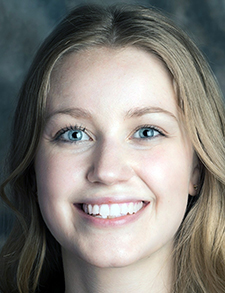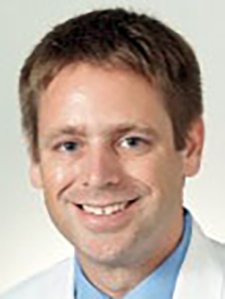When navigating academic medicine, a daunting task is entering into the world of scholarship. Junior faculty, residents, and medical students are often intimidated trying to find an entry point. Lack of experience, time, and knowledge of where to even begin are major hurdles. As hospitalists are often largely clinical, patient care is where scholarship can start. The people we care for every day are fundamental to our understanding of the practice of medicine. Long before clinical trials, we had descriptions of angina from Osler and Heberden that came from bedside experience. Case reports have led to fundamental discoveries including the first reports of AIDS and effects of gadolinium in patients with renal dysfunction. More recently they played an integral role during the onset of the COVID-19 pandemic, describing clinical manifestations and complications. While scholarship can be intimidating, our day-to-day work is where it all starts.
Where to start
Case presentations at local teaching conferences at your institution serve as perfect initial venues. Morning report is a time-honored tradition in internal medicine utilizing real-life cases for clinical learning about diagnostic dilemmas, clinical decision-making, and working through challenging cases. Morning report is prevalent in residency programs, serving as a great early local venue for residents and mentoring faculty to practice the skills of presenting complicated patients and developing learning objectives. For junior faculty, this serves as continuing medical education and an opportunity to mentor trainees. Morbidity and mortality conferences are an additional, commonly available, local platform well-suited for cases with a focus on poor outcomes or systems-based learning points for quality improvement.
Many regional conferences of internal medicine professional organizations accept cases for poster or oral presentations in the form of clinical vignette abstracts. This academic writing is more focal and achievable for new writers, with word and character limits typically keeping the abstract to approximately one page. Vignettes are an accessible entry point to gain experience and develop skills with abstract and poster development, as well as presenting the work. Regional conferences are a great opportunity to meet people in your field, often with an accepting and familiar audience and easier travel. National conferences provide a platform to reach an even broader audience to disseminate teaching points from your clinical vignettes, as well as offer even more opportunities for future collaboration and sharing of ideas. SHM’s Converge annual conference is an excellent national venue for rare diagnoses, unique presentations, and learning points of common diseases of interest to practicing hospitalists. In addition to general medicine conferences, many relevant subspecialty national conferences can also be considered.
Moving toward publication
The next level of scholarship related to patient cases is publishing in national journals. Case reports and clinical images are accessible ways to publish patient cases that highlight an unusual presentation or nuanced care. Manuscripts for case reports are generally longer and more in-depth than clinical vignette poster submissions. Good case reports usually have specific learning points for the reader to take away. These often focus on a novel or unexpected occurrence, which can be related to the presentation, side effects, clinical course, therapeutic alternatives, or new variations in a disease. A brief description of the case, highlighting the pertinent positives and negatives, then leads to a robust discussion of the unique features and lessons learned, and a summary of your literature review. Writers should be mindful that patient consent is required for some publications. Clinical image publications generally have more succinct case descriptions than a case report but require high-quality images related to a finding on physical exam, radiological study, or electrocardiogram. Both methods of scholarship are access points for publication based on interesting cases in everyday clinical practice. In settings of emerging new data such as the COVID-19 pandemic or, recently, with euglycemic diabetic ketoacidosis, a series of cases can be combined.
As hospitalists, clinical reasoning and diagnostic dilemmas are integral to our daily practice and provide another scholarship opportunity. There are several ways to publish these challenging cases. First, The Journal of the American Medical Association’s “Teachable Moment” series focuses on common cases that resulted in either over- or under-utilization of healthcare resources. The goal is to involve a trainee as a first author and highlight opportunities for improved resource utilization. Cases with especially nuanced clinical reasoning can be published in several venues including the Journal of Hospital Medicine’s “Clinical Care Conundrum,” Journal of General Internal Medicine’s “Exercises in Clinical Reasoning,” and New England Journal of Medicine’s “Clinical Problem Solving.” These formats present a patient case in aliquots using an expert clinician who provides commentary on their clinical reasoning. The particular journal will designate the format and case content.
Expanding to other scholarship ideas
Taking care of patients often sparks our curiosity and raises clinical questions leading to other pathways of scholarship. In hospital medicine, we routinely find ourselves with a complicated patient and baffled about clinical management. These dilemmas lead us to dive into the literature. These situations are usually shared by many and lead to an excellent opportunity to write an article describing the best approach to a specific clinical scenario. The Hospitalist’s “Key Clinical Question” series and Cleveland Clinic Journal of Medicine’s “1-Minute Consult” series are excellent avenues to describe the approach to these specific clinical questions. When the topic touches on areas of high-value care or potential waste, or challenges clinical dogma, the Journal of Hospital Medicine’s “Things We Do For No Reason” series is an excellent avenue for dissemination that can influence widespread changes in clinical care.
Clinical problems with our patients spark us to seek change with a potential intervention or investigation. While some prospective research, like randomized controlled trials is intimidating and less common for hospitalists, we routinely find ourselves involved in quality improvement. A common opening towards a quality improvement idea is when we notice systems-based problems or delays in the optimal care of our patients. As a hospitalist on the ground level on most aspects of inpatient care, we have a pivotal role in identifying process problems, and then acting with a multidisciplinary team for process improvement. To widen the impact beyond just the patients in our healthcare setting, in any project we embark on, it’s helpful to plan out ways this can be turned into scholarship to disseminate information so others can learn from our experience and actions. To improve on this aspect of patient care and scholarship, there are numerous quality improvement training courses both locally and nationally including the Society of Hospital Medicine’s Quality Improvement Academy.
Summary
Many forms of scholarship are accessible to hospitalists, and caring for patients on the front lines is an ideal place to generate ideas. Disseminating what we learn from our patient interactions shapes the field of hospital medicine and impacts patients beyond those in front of us. Everyday patient care is why most of us started our careers as hospitalists and can serve as an excellent entry point for generating scholarship.
SHM’s Physicians in Training committee shares articles on topics relevant to trainees and early-career hospitalists.

Dr. Molitch-Hou

Dr. Feldt

Dr. Vick

Dr. Gray
Dr. Molitch-Hou is an assistant professor, the director of the hospital medicine sub-internship, core faculty for the internal medicine residency program, and co-director of the Care Transition Clinic at the University of Chicago Medical Center in Chicago. Dr. Feldt is an internal medicine resident at the University of Chicago. Dr. Vick is an assistant professor, co-director for the entrustment in clinical medicine course, and associate program director for the internal medicine residency program at the University of Kentucky in Lexington, Ky. Dr. Gray is an associate professor and the internal medicine clerkship director at the University of Kentucky in Lexington, Ky.